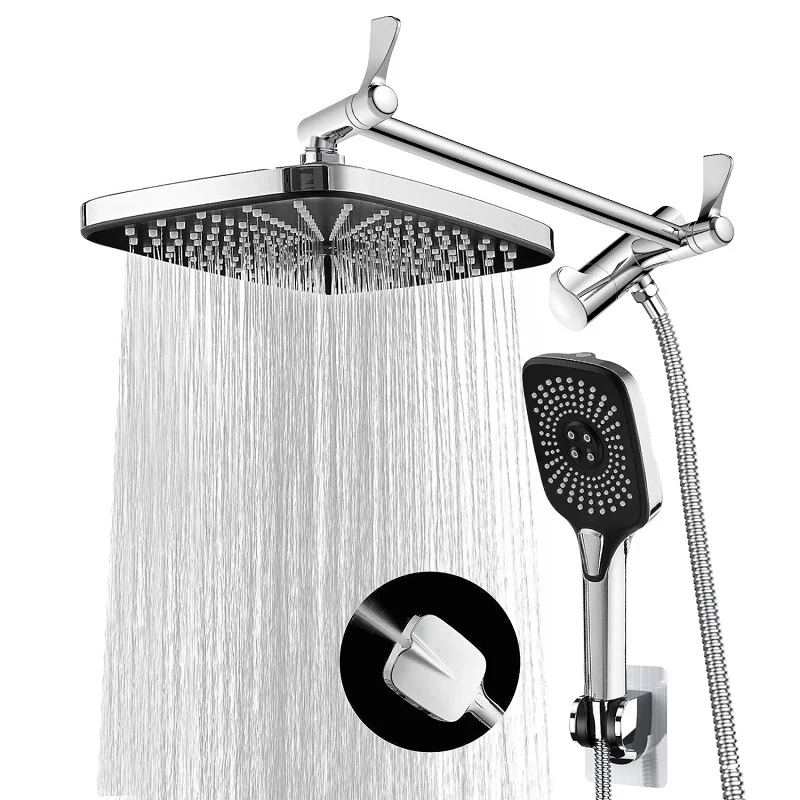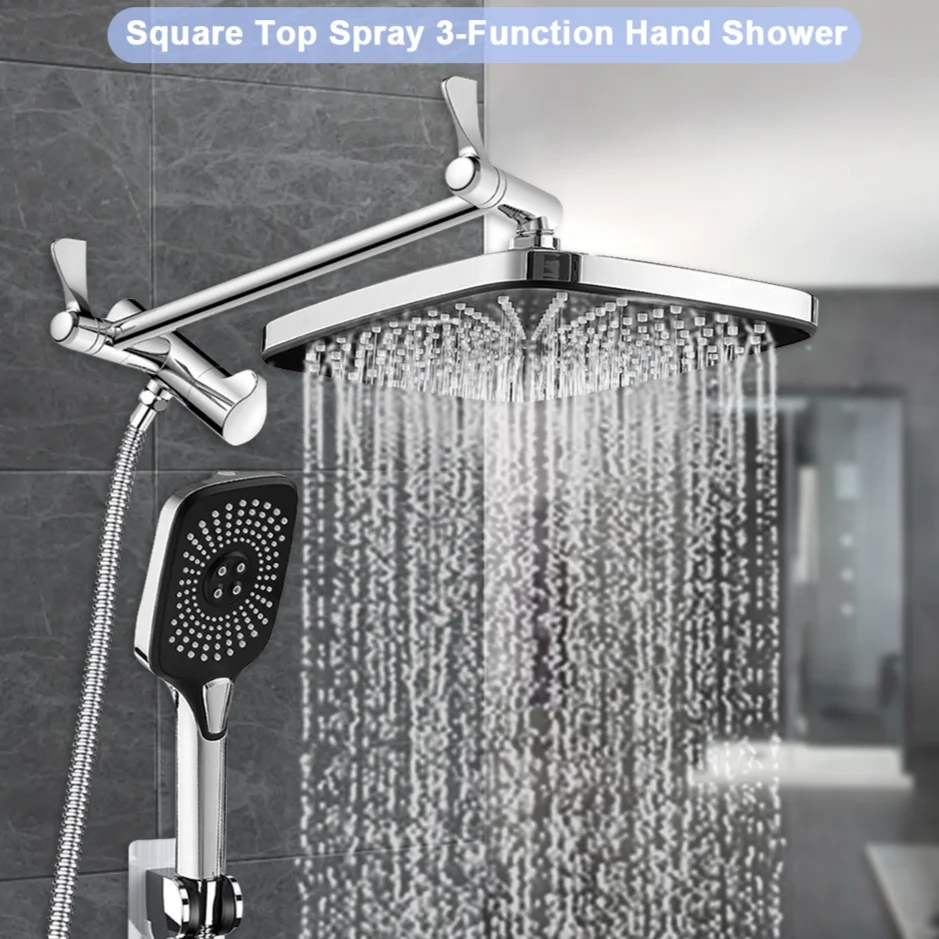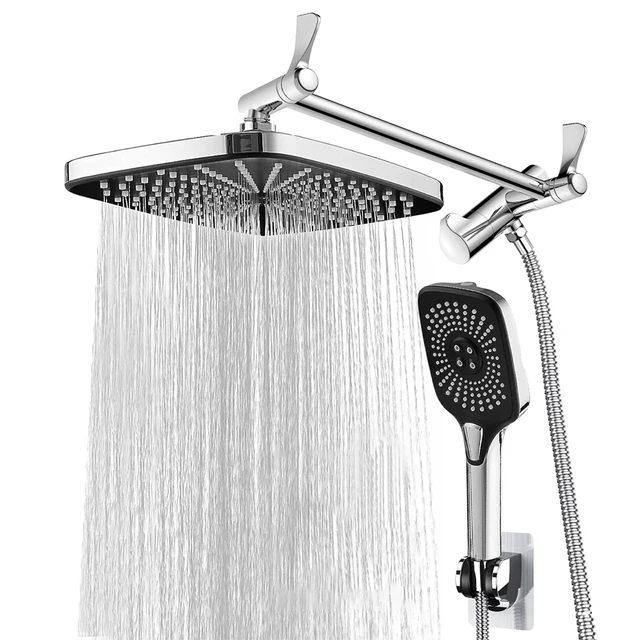Introduction
Fixing a leaking shower head is a practical skill that saves water and money. A steady drip from your bathroom can be more than an annoyance. Left unchecked, it can lead to inflated water bills and potentially cause damage due to moisture build-up. Why do shower heads leak? The reasons vary, including wear and tear on washers and seals, valve damage, or mineral deposits that accrue over time. Regardless of the cause, it’s essential to understand how to fix a leaking shower head.

This guide aims to provide clear instructions for diagnosing and fixing leaking shower heads. We’ll cover the common causes of leaks, how to replace washers and seals, and when it might be time to seek professional help. Whether you’re a DIY enthusiast or deciding if you need a plumber, this guide will support you in stopping that pesky drip. Let’s get started on the path to a leak-free shower.
Common Causes of Shower Head Leaks
Understanding why your shower head is leaking is crucial before attempting to fix it. Here are common causes:
Worn-Out Washers and Seals
Over time, rubber washers and seals may degrade and fail, resulting in leaks. These pieces are key to creating a water-tight seal and need regular checking.
Valve Damage and Corrosion
Valves control water flow and can wear out or become corroded. Damaged valves may cause water to escape, leading to a leak in your shower head.
Limescale and Mineral Buildup
Hard water can lead to limescale and other minerals building up in the shower head. These blockages can disrupt water flow and create leaks.
High Water Pressure Issues
If water pressure is too high, it can strain the plumbing system. This might lead to leaks at various points, including the shower head.

Preparatory Steps Before Repair
Before you begin tackling the issue at hand, it’s crucial to undergo certain preparatory steps. These actions ensure a smooth repair process and help prevent any further issues while you’re fixing the leaky shower head.
Turning Off the Water Supply
The first and most important step is to shut off the water supply. This is usually done at the main water valve of your home. Turning off the water prevents potential flooding and allows you to work on the shower head without water splashing everywhere. Remember to turn the valve until it can no longer move to ensure the supply is completely closed.
Gathering Necessary Tools and Materials
Once the water is off, you’ll need to gather the right tools for the job. The essential items include an adjustable wrench, some plumber’s tape, replacement washers and seals, and possibly a screwdriver or pliers, depending on your shower head model. Having all your tools within reach can save time and help you stay organized during the repair. It’s also wise to keep a towel or a small container nearby to catch any remaining water that may drip out once you disassemble the shower head.
Step-by-Step Repair Guide
A leaking shower head can be a nuisance, but with some basic know-how, fixing it is usually straightforward. This step-by-step repair guide covers the essentials to help you fix leaks efficiently.
Inspecting and Cleaning the Showerhead
Before you replace any parts, inspect your showerhead for buildup or debris.
- Remove the shower head by unscrewing it from the hose or pipe.
- Check for dirt, limescale, or mineral deposits.
- Soak it in a mixture of white vinegar and water for about 30 minutes.
- Scrub with a toothbrush, focusing on the nozzles and any buildup spots.
- Rinse thoroughly with water before reassembling.
Replacing Washers and Seals
Often, leaks are due to worn-out washers or seals.
- Turn off the water supply at the main valve.
- Disassemble the shower head to access the washer and seals.
- Replace any damaged or worn-out parts.
- Reassemble the shower head and reattach it to the hose or pipe.
Fixing Leaky Mixer Valves
Mixer valves can wear out, causing leaks.
- Shut off the main water supply.
- Remove the handle or controls to access the mixer valve.
- Examine for signs of damage or wear.
- Replace the mixer valve with a new one if needed.
- Secure all parts back in place and restore water supply to test.
Cartridge Valve Replacement
Cartridge valves may fail, resulting in a drip.
- Cut the water supply to prevent leakage during repairs.
- Take the faucet handle off to reveal the cartridge.
- Carefully pull out the old cartridge.
- Insert a new cartridge, ensuring it fits snugly.
- Put the faucet handle back on and turn the water back on for testing.
These steps should resolve most showerhead leaks. However, if you face complications or persistent leaks, consider seeking professional assistance.
Professional Help vs. DIY Repairs
While tackling shower head leaks can be a DIY task, knowing when to seek professional help is vital. It might be tempting to fix the leak yourself, but certain situations call for expert hands. In this section, we’ll discuss the indicators that signal it’s time to call a plumber and consider the boundaries of DIY plumbing repairs.

When to Call a Professional Plumber
Call for professional services if these issues arise:
- The leak persists after you’ve replaced parts.
- You spot water damage, mold, or structural concerns.
- The plumbing task requires specialized tools or skills.
- You’re uncertain about how to proceed after troubleshooting steps.
- The problem involves complex systems, such as in-wall piping.
It’s better to invest in a plumber when high-level expertise is needed. Plumbers can effectively diagnose complex problems, avoiding further damage and saving you money in the long run. Remember, mistakes made during DIY repairs might lead to costly fixes later.
Understanding the Limits of DIY Plumbing
DIY plumbing is good for simple fixes, but it has limits. Here’s what to keep in mind:
- Know your local plumbing codes to avoid violations.
- Understand your skill level and the complexity of the task.
- Only perform repairs that don’t compromise your plumbing system.
- Recognize that incorrect repairs can lead to bigger issues.
- Be mindful of warranty stipulations that can be voided by DIY repairs.
Tackling simple tasks like replacing a shower head or washer is generally safe. When the scope goes beyond that, think twice. Faulty repairs can result in leaks within walls, causing unseen damage. To guarantee a job well done, calling in a professional plumber is often the wisest decision.
Troubleshooting After Repairs
Once you’ve completed the repairs on your showerhead, the next step is to ensure the fixes hold strong. Proper troubleshooting can help you avoid repeat issues and extend the life of your shower components. Here’s how you can get started:
Testing for Leaks
After any repair, double-checking for leaks is crucial. Turn the water supply back on and watch the showerhead. Look for drips or unusual water flow. If it’s still leaking, re-examine your work. Make sure all components are fitted securely and correctly.
Listen for sounds of dripping when the shower is off. Check connections and replace any faulty parts if needed. A dry shower area after a few minutes suggests a successful repair job.
Long-Term Maintenance Tips
To prevent future leaks, regular maintenance is key. Here are a few tips to maintain your shower head:
- Clean the showerhead regularly to prevent limescale buildup.
- Inspect the washers and seals periodically and replace them as needed.
- Keep water pressure at an appropriate level to avoid strain on plumbing.
- Check the cartridge and mixer valves every few years and replace if required.
By following these maintenance tips, you’ll extend the lifespan of your shower and reduce the likelihood of leaks.
Conclusion
If your showerhead is still leaking after following the steps provided, it may be time to call a professional. Leaks can be tricky, and sometimes, they require an expert’s touch. When deciding between DIY and professional repair, consider the complexity of the issue and your own skill level. Keep in mind, some tasks are best left to the pros, especially when dealing with in-wall pipes or unfamiliar problems.
Finally, remember to perform regular maintenance on your showerhead. This includes cleaning to prevent limescale, checking washers and seals, monitoring water pressure, and occasionally replacing the cartridge and mixer valves. With proper care, your shower can stay leak-free for a long time. If you get stuck or encounter bigger issues, don’t hesitate to reach out to a plumber. Fixing a leaking shower head is one thing, but keeping it running smoothly is an ongoing task. Stay vigilant and your shower will remain a place of relaxation, not stress.


